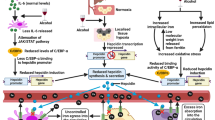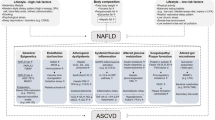Abstract
Oxidative stress is an imbalance between production and elimination of reactive metabolites of oxygen and nitrogen, in favor of their production leading to potential damage. During oxidative stress, biologically important molecules and cells can be damaged, and this can be significant in the pathogenesis of many diseases. Reactive oxygen species (ROS) and ROS-induced cytokines are known to trigger the apoptosis of some hepatocytes and therefore contribute to inflammation, regeneration, fibrogenesis, and carcinogenesis. The enzymes generally considered to be the frontline defense against ROS are catalase (CAT), the mitochondrial manganese superoxide dismutase (MnSOD), and glutathione peroxidase (GPX). Our aim in this work is to assess the possible association of the antioxidant enzyme polymorphisms of CAT (c.C-262T, rs1001179), MnSOD (p.Val16Ala, rs4880), and GPX1 (p.Pro 198 Leu, rs1050450) with the development of hepatocellular carcinoma (HCC) in a sample of hepatitis C virus (HCV)-infected Egyptian patients. Genetic polymorphisms were estimated in 40 HCC patients on top of HCV infection, 20 cirrhotic patients on top of HCV infection, and 20 healthy control individuals. Genetic polymorphisms of CAT (c.C-262T), MnSOD (p.Val16Ala), and GPX1 (p.Pro 198 Leu) were studied using PCR-RFLP technique. With regard to CAT enzyme polymorphism, the frequency of the CC was significantly higher in HCC and cirrhosis patients compared to the healthy control group (p = 0.000). The frequency of the C allele in the three studied groups did not show statistically significant difference (p = 0.081). Patients bearing CT + TT genotypes had 0.107-fold and 0.205-fold reduced risk of development of liver cirrhosis and HCC [p = 0.001, 95 % CI (0.025–0.459); p = 0.010, 95 % CI (0.058–0.721)], respectively, compared to those bearing CC genotype. With regard to the MnSOD, the Ala/Ala genotype was significantly higher in the HCC group and cirrhosis group than in control individuals (p = 0.001). Similar results were found regarding the frequency of the Ala allele in the three studied groups (p = 0.128). Patients bearing Ala/Ala genotype that had 2.8-fold and 1.8-fold increased the risk of development of liver cirrhosis and HCC [p = 0.001, 95 % CI (1.753–4.530); p = 0.001, 95 % CI (1.415–2.471)], respectively, compared to those bearing Val/Val + Val/Ala genotypes. With regard to GPX1 gene, the frequency of Pro/Leu genotype was significantly higher in the HCC and cirrhotic group compared to control group (p = 0.000). There was a significant increase in Leu allelic frequency in HCC and cirrhotic patients than in control group (p = 0.006). The presence of Leu allele increased the risk of development of liver cirrhosis and, consequently, HCC by 3.7-fold [p = 0.018, 95 % CI (1.205–11.78)] and 4.9-fold [p = 0.001, 95 % CI (1.742–13.86)], respectively, compared to Pro allele. The presence of CC of CAT (c.C-262T), Ala/Ala of MnSOD (p.Val16Ala) genes, and Leu allele of GPX1 (Pro 198 Leu) gene is considered as risk factors for development of liver cirrhosis and HCC in the presence of HCV infection.

Similar content being viewed by others
References
Anwar WA, Khaled HM, Amrac HA, El-Nezami H, Loffredo CA (2008) Changing pattern of hepatocellular carcinoma (HCC) and its risk factors in Egypt: possibilities for prevention. Mutat Res 659:176–184
Budhu A, Wang X (2006) The role of cytokines in hepatocellular carcinoma. USA J Leukoc Biol 80:1197–1213
Cebrian A, Pharoah PD, Ahmed S, Smith PL, Luccarini C, Luben R, Redman K, Munday H, Easton DF, Dunning AM, Ponder BA (2006) Tagging single-nucleotide polymorphisms in antioxidant defense enzymes and susceptibility to breast cancer. Cancer Res 66:1225–1233
Chandrasena LG, Chackrewarthy S, Perera PT, Silva D (2006) Erythrocyte antioxidant enzymes in patients with cataract. Ann Clin Lab Sci 36:201–204
Ezzikouri S, El Feydi AE, Chafik A, Afifi R, El Kihal L, Benazzouz M, Hassar M, Pineau P, Benjelloun S (2008) Genetic polymorphism in the manganese superoxide dismutase gene is associated with an increased risk for hepatocellular carcinoma in HCV-infected Moroccan patients. Mutat Res 649(1–2):1–6
Ezzikouri S, El Feydi AE, Afifi R, Benazzouz M, Hassan M, Pineau P, Benjelloun S (2010) Polymorphisms in antioxidant defense genes and susceptibility to hepatocellular carcinoma in a Moroccan population. Free Radic Res 44(2):208–216
Forsberg L, Faire U, Morgenstern R (2001a) Oxidative stress, human genetic variation, and disease. Arch Biochem Biophys 389:84–93
Forsberg L, Lyrenas L, Faire U, Morgenstern R (2001b) A common functional C-T substitution polymorphism in the promoter region of the human catalase gene influences transcription factor binding, receptor gene transcription and is correlated to blood catalase levels. Free Radic Biol Med 30(5):500–505
Hussain S, Seth HL, Harris C (2003) Radical causes of cancer. Nat Rev Cancer 3:276–285
Iredale JP (2003) Cirrhosis: new research provides a basis for rational and targeted treatments. BMJ 327(7407):143–147
Kim I, Moon SO, Kim SH, Kim HJ, Koh YS, Koy GY (2001) Vascular endothelial growth factor expression of intercellular adhesion molecule 1 (ICAM-1), vascular cell adhesion molecule 1 (VCAM-1) and E-selectin through nuclear factor-kappa B activation in endothelial cells. J Biol Chem 276:7614–7620
Lachance PA, Nakaz Z, Jeong WS (2001) Antioxidants: an integrative approach. Nutrition 17:835–838
Nahon P, Sutton A, Rufat P, Charnaux N, Mansouri A, Moreau R, Carrié NG, Lemaire VG, Kontchou GN, Trinchet JC, Pessayre D, Beaugrand M (2007) Manganese superoxide dismutase dimorphism and iron overload, hepatocellular carcinoma and death in hepatitis C virus-infected patients. Clin Gastroenterol Hepatol 5(5):630–635
Nahon P, Sutton A, Rufat P, Charnaux N, Mansouri A, Moreau R, Carrié NG, Lemaire VG, Kontchou GN, Trinchet JC, Pessayre D, Beaugrand M (2009) Myeloperoxidase and superoxide dismutase 2 polymorphisms comodulate the risk of hepatocellular carcinoma and death in alcoholic cirrhosis. Hepatology 50:1484–1493
Nahon P, Sutton A, Rufat P, Charnaux N, Mansouri A, Moreau R, Carrié NG, Lemaire VG, Kontchou GN, Trinchet JC, Pessayre D, Beaugrand M (2012) A variant in myeloperoxidase promoter hastens the emergence of hepatocellular carcinoma in patients with HCV-related cirrhosis. Hepatology 56:426–432
Sutton A, Nahon P, Pessayre D, Rufat P, Poire A, Ziol M (2006) Genetic polymorphisms in antioxidant enzymes modulate hepatic iron accumulation and hepatocellular carcinoma development in patients with alcohol-induced cirrhosis. Cancer Res 66(5):2844–2852
Tang H, Dong X, Day RS, Hassan MM, Li D (2010) Antioxidant genes, diabetes and dietary antioxidants in association with risk of pancreatic cancer. Carcinogenesis 31:607–613
Valko M, Leibfritz D, Moncol J, Cronin MT, Mazur M, Telsur J (2007) Free radicals and antioxidants in normal physiological functions and human disease. Int J Biochem Cell Biol 39:44–84
Wang W, Timms P, Campbell S, Mand Wang X (2005) Temporal and spatial control of nucleophosmin by the Ran-Crm 1 complex in centrosome duplication. Nat Cell Biol 7:823–830
Zhou L, Yang Y, Tian D, Wang Y (2013) Oxidative stress-induced 1, N6-ethenodeoxyadenosine adduct formation contributes to hepatocarcinogenesis. Oncol Rep 29(3):875–884
Conflict of interest
There are no conflicts of interest.
Author information
Authors and Affiliations
Corresponding author
Rights and permissions
About this article
Cite this article
Abd El-Ghaffar, H.A.ER., Ahmed, A.I., Abdelaal, A.A. et al. Antioxidant enzymes gene polymorphisms and hepatocellular carcinoma in hepatitis C virus-infected Egyptian patients. Comp Clin Pathol 24, 609–615 (2015). https://doi.org/10.1007/s00580-014-1954-2
Received:
Accepted:
Published:
Issue Date:
DOI: https://doi.org/10.1007/s00580-014-1954-2




